- Entertainment
- Celebrity News
- Food & Drinks
- Relationships
- Diet & Nutrition
- Body & Fitness
- Expert Advice
- Pregnancy & Birth
- Fashion News
- Beauty News
- Latest News
- Competitions
- Homes To Love
- Home Beautiful
- Better Homes and Gardens
- Hard to Find
- Now to Love
- That's Life
- Women's Weekly
- Women's Weekly Food
- Gourmet Traveller
- Bounty Parents
- marie claire
- Beauty Heaven
- Beauty Crew
- Fashion & Beauty

The Rose Noelle: 25 years on, a wife’s true story
Karen Hofman lost her beloved husband once for four long months. But now he is lost to her forever. Karen is coming to terms with the death of Phil Hofman, who passed away in March after a heart attack.
In 1989, the father of five was involved in New Zealand’s most gripping maritime survival story.
Along with John Glennie, Rick Hellreigel and Jim Nalepka, Phil was shipwrecked when their yacht, the Rose Noelle, capsized three days after it set sail from Picton for Tonga. Drifting at sea for a harrowing 119 days, the tale of how the four strangers survived the elements – and each other – has become legendary.
Many thought the men had perished, but Karen knew in her heart that her husband was still alive. She recalls how she made a pact with God, promising that if Phil was saved, she would embrace and accept him, even if he returned a changed man.
The men, who survived in a tiny area the size of a queen-sized bed, were eventually rescued when the wreckage of the Rose Noelle crashed ashore in a remote part of Great Barrier Island.
“Many days had passed,” recalls Karen, reflecting on her husband’s disappearance. “Behind the scenes, people were having conversations, saying they needed to tell me to face the reality that my husband was not coming home.
“They told me a memorial service needed to be organised. But I had to see the proof – I needed to see the wreckage. I wasn’t going to give up hope.”
In June, it will be 25 years since the famous ordeal garnered worldwide attention. Karen says it’s a fitting time to pay tribute to Phil, a man she loved dearly, one who many thought would be lost at sea forever.
“He wasn’t a glass half full kind of person. He liked the glass overflowing and being filled up again. He had an infectious energy, which I loved,” says Karen, who resides in the South Island town of Kurow. “Going through what I did during the Rose Noelle disappearance has probably prepared me for Phil’s death. I’ve already experienced missing him. But this time it’s harder, because I know he’s never coming back.”
Karen met Phil when she was 11 years old and growing up in the Auckland suburb of Manurewa. She was immediately drawn to his charm and zest for life. The pair married when Karen was just 17 and they started a family together. By the 90s, they were living on a boat and sailing around New Zealand with their children.
While docked behind the Rose Noelle in Picton, the opportunity arose for Phil, who was a builder, to join the boat’s captain, John Glennie, on a voyage to Tonga.
“Phil was always looking for adventure,” Karen explains. “He expressed interest and was soon sailing the seas with John and two men, Rick and Jim, who John found by placing an ad at the local backpackers.”
Phil, who had had triple bypass surgery three years earlier, was looking forward to the trip, but three days into the voyage, a huge wave washed over the 12.5m yacht, tipping it upside down and trapping the men inside.
Half submerged under water, the men learned to survive in near impossible conditions. Hunched together in the upturned yacht, the men rigged up a water catchment system so that they could drink. John dived into the submerged cabin, feeling his way around for food. And the boat eventually grew barnacles and became a floating reef, so they were able to catch fish.
Karen says Phil often spoke about the horrifying experience, and told her that thinking about his family is what kept him alive.
“He wondered if he would see his children again. He realised he had a lot to lose.”
Surviving the physical elements was hard, but surviving each other – four men who had little in common – proved to be just as difficult. They realised that to get through the long days and nights, they had to work as a team and tolerate each other.
“It was wet and cold. They were stuck in a small space and were hungry and thirsty. It would be tough for any relationship to survive that,” Karen tells.
The men had no way of knowing if they would be rescued – their emergency beacon had not been picked up and eventually stopped working.
But they were overjoyed when the Rose Noelle eventually washed up in a secluded area of Great Barrier Island.
After making it to shore and spending a night in the bush, the men broke into a bach, where they cleaned up, shaved, trimmed their hair, changed into clothes they found and cooked themselves a meal, before sleeping through the night.
The next day, when they sought help at a neighbouring home, the group’s reappearance sparked a media frenzy. Every news outlet wanted to tell their story, but because they appeared clean-shaven, their account was originally met with suspicion, with many claiming it was a hMax.
Rumours even surfaced that the men were covering up a drug trafficking operation to South America. However, an investigation found convincing evidence that the men’s story was true, especially when marine growth was found on the boat’s topside.
Karen was thrilled to have her husband back. She smiles, recalling that his first words to her were, “Hi, honey, I’m home.”
But the return wasn’t all plain sailing – Karen noticed a significant change in Phil.
“Emotionally and mentally, he thought it hadn’t affected him at all, but he went off the rails a bit. He thought he was invincible. I imagined he would come back changed for the better – that he would have had an epiphany. He didn’t believe in God, but I thought having had his life spared, he would have more faith. He didn’t. The attention went to his head and he went wild.”
A year after his return, the couple had their fifth child – a daughter they named Phillippa. Karen says being a father again helped Phil settle more – even though he strayed, enjoying a liaison with another woman.
“I had made a deal with God,” Karen reiterates. “However he came back and however he was would be okay with me. I had to keep my end of the bargain and be happy with Phil as he was.”
In recent years, Phil became ill with heart disease, which he succumbed to on March 23. By then, the Rose Noelle drama was a distant memory for him, despite all the TV documentaries, books and plays based on the amazing survival story.
Karen says that after the disaster, Phil lost touch with the other three men. John moved to the US, Rick died of a brain tumour two years after the boat accident, and Jim returned to the US after helping to nurse Rick as his brain tumour progressed. Jim later came back to New Zealand and qualified as a nurse.
Karen says she and her five children, Elizabeth (48), Michelle (46), Chantelle (40), Dion (38) and Phillippa (23), miss Phil dearly. Rod Stewart’s song Sailing was played at his funeral and Karen still sleeps with his unwashed jersey – his scent keeping memories alive.
She says she is grateful she got to spend so many more years with Phil, after coming so close to losing him at sea.
“I loved him. For me, there was nobody else in the world. He was the father to my children and my best friend.”
WATCH: A scene from Abandoned
The Rose Noelle crewmen finally reach dry land
Related stories
.jpg?resize=380%2C304&ssl=1)
Animal communicator put to the test
.jpg?resize=380%2C304&ssl=1)
Quadruple amputee Charlotte comes of age
Native ad body.
4 Sailors’ 118 Days at Sea: Survival Tale or Hoax?
- Show more sharing options
- Copy Link URL Copied!
Four sailors’ survival at sea for 118 days in an upturned trimaran ranks as one of the world’s greatest survival stories--or one of its greatest hoaxes.
If the tale is to be believed, the trimaran Rose-Noelle was flipped over on June 4 by a huge wave in a 60-knot gale three days out of New Zealand’s South Island. It made land on Sept. 30.
Despite losing up to 40 pounds each, the three New Zealanders and an American survived the stormy southern winter in good shape--such good shape that some people doubt their story.
An official investigation into whether the sailors’ story checks out--and if so, why search and rescue efforts were so far astray--is not expected to be completed for another three weeks.
The investigator has declined comment until his inquiry is completed. But Capt. Melvyn Bowen, who conducted an initial investigation, is convinced that the four are telling the truth.
After visiting the wreckage on isolated Great Barrier Island north of Auckland where the Rose-Noelle drifted ashore, Bowen said he found convincing evidence, such as marine growth on the boat’s topside. “Personally I don’t feel it is a hoax,” he said.
But some questions linger. Local yachtsmen ask why, after such a long time at sea in appalling conditions, the men had no pressure-point or salt sores, which are almost universal for a long sea voyage.
Other points baffling investigators are how two radio messages were supposedly received from the Rose-Noelle by another yacht after the flip and how the Rose-Noelle drifted from 140 miles off the east coast of New Zealand around the top of the island to the west coast.
The pattern of the currents should have taken it farther east toward South America.
Plausible explanations to these mysteries have been suggested and, although skepticism remains, it is hard to imagine a motive for a hoax.
Skipper John Glennie has signed contracts for his story but the payments are hardly likely to compensate for the $145,000 loss of his 40-foot trimaran, which was smashed to bits on rocks.
“All those who think it’s a hoax are bloody idiots,” said crewman Phillip Hofman. Asked if there was any conclusive evidence, he said: “Yeah, the fact that I know we did it and three other people did it.”
The story as they tell it is a remarkable one.
Their 118 days adrift exactly equals the time Maurice and Maralyn Bailey of England spent in a tiny life raft and dinghy after their yacht was pierced by a whale off the Galapagos Islands in 1973.
Other than the undocumented story of a Hong Kong seaman who was reported to have been picked up during World War II after 133 days adrift, it is a record for survival at sea.
Here is their story:
After the boat capsized, they spent their first day trapped in the cabin. Then they hacked a hole in the hull and spent a nightmare four months crammed in a space the size of a double mattress.
For the first month water was desperately short, augmented by soft drinks and meager rations.
But after they rigged a system for collecting rain water, conditions improved and were considerably better, although colder, than those experienced by the Baileys.
Marine growth on the boat attracted more and more fish, and a large grouper even swam into the cabin one day.
“Toward the end we were eating better than you guys at home,” crewman Rick Hellriegel told a news conference on his return.
Glennie dived into the main cabin to retrieve more and more equipment. They had a gas cooker and even rigged up a barbecue on fine days.
But relations were strained. American Jim Nalepka said tension seethed among the four, who barely knew each other before the voyage. He and Hellriegel said they never wanted to see Glennie again. Glennie said the feeling is mutual.
Battles, not physical, were fought over half a biscuit or over who could sit on the well-lit side of the makeshift cabin where reading was possible.
“At one time, one of us, I won’t mention the person, was a liability, but we worked really hard to get that person out of that position. We thought the worst, you know, slitting his throat and pushing him overboard. But we did that in jest,” Nalepka said.
Despite the friction, the four knew they had to depend on each other and gradually jelled into a team. Hellriegel said it was a great help just having the body heat of four people during freezing winter weather.
Five or six times they were forced by the weather to stay below for days on end. That’s when spirits sagged and tensions ran high.
“Cabin fever, we called it. That’s a real condition,” Nalepka said. “Fighting over a half a biscuit seems trivial but no, it was too real. It was classic what we went through.”
More to Read

El Salvador’s autocratic president gets rock-star welcome at pro-Trump CPAC event
Feb. 23, 2024
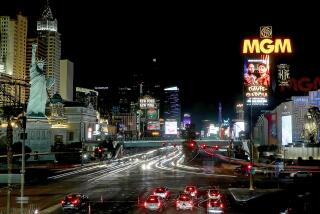
Bedbugs check in to some popular Las Vegas hotels. Guests may leave with new travel companions
Feb. 20, 2024

Why replacing Biden with Newsom or some ‘mythical perfect Democrat’ is unlikely
Feb. 13, 2024
Start your day right
Sign up for Essential California for news, features and recommendations from the L.A. Times and beyond in your inbox six days a week.
You may occasionally receive promotional content from the Los Angeles Times.
More From the Los Angeles Times

World & Nation
Off to Michigan, Haley is staying in the race despite Trump’s easy primary win in South Carolina

Netanyahu says cease-fire deal would only delay ‘somewhat’ an Israeli military offensive in Rafah

Vigils held nationwide for nonbinary Oklahoma teenager who died after school bathroom fight
Feb. 25, 2024
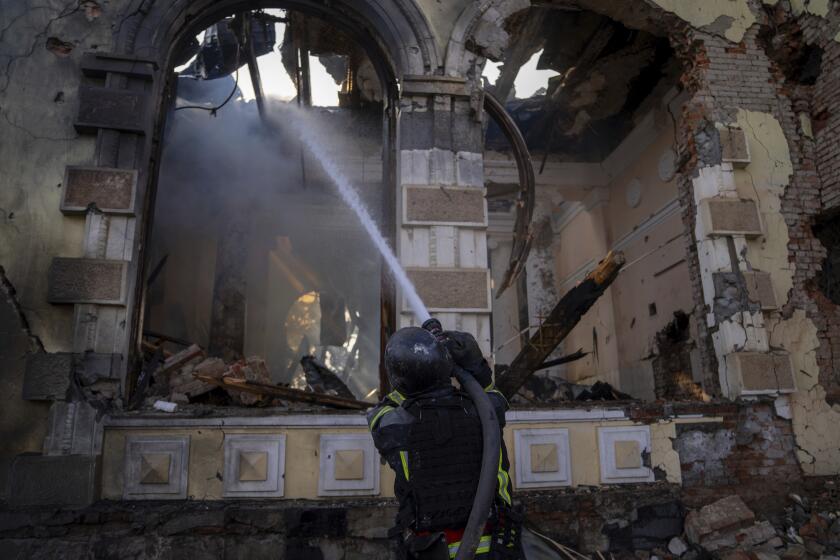
Delays in promised Western military aid to Ukraine are costing lives, the defense minister says
- THE PRINCESS PASSPORT
- Email Newsletter
- Yacht Walkthroughs
- Destinations
- Electronics
- Best Marine Electronics & Technology
- Boating Safety
- Cruising and Chartering
119 Days Upside Down
- By Yachting Staff
- Updated: August 12, 2010
Horror makes a noise: a roar, like a deep rumble of thunder rolling across the heavens. It was just before sunrise when John Glennie heard it coming—a phenomenal freak wave more than 16 metres high was bearing down on his small yacht like a damburst of water. It was horrifying.
Within seconds the wave had exploded onto the scene, and it dealt with the yacht like a huge tsunami smashing its way across a low-lying island: Anything in its path was destined to be bulldozed out of the way. Suddenly, after three days of battling this ferocious storm off New Zealand’s east coast, the worst fears held by Glennie and his three crew were about to be realised. The 41-foot-long trimaran Rose-Noëlle , which had been lying beam-on to the seas, was engulfed by an avalanche of white water, pitched to 90 degrees then flipped upside down.
Inside the yacht it was as if a house had been inverted in an earthquake. There were shouts amid the darkness as the crew struggled to free themselves from the debris that had crashed down on them. It was a vice-versa world to what they had known a few minutes earlier: Their ceiling was now their floor. Everything that had been below them was now above their heads, and there was a cold ocean swirling into their habitat. Where would it stop? Were they going to sink?
When this calamitous situation stabilized there was just darkness and near silence. Being upside down meant they had been soundproofed from the howl of the storm that raged outside. Before long the water level settled. They were still afloat, and destined to stay that way until…whenever!
For 19 years, Glennie had dreamed of this voyage from his native New Zealand to Tonga and onwards to other enchanting islands in the South Pacific. He was a highly experienced offshore yachtsman with more than 40,000 cruising miles to his credit, and that included sailing in the Roaring Forties. He had designed and built Rose-Noëlle in Sydney a few years earlier based on this experience.
It was now 1989 and his plan was to escape the clutches of the worst of the New Zealand winter, but as the departure date of 1 June drew closer, his frustrations associated with crew selection and the general preparation of the yacht were rising proportionately. His initial desire was to have friends join him for the cruise, but when those friends, who were all good sailors, advised at the last minute they couldn’t make the trip he opted for three people he barely knew, and they had little or no sailing experience. His first recruit was 41-year-old Phil Hofman, who was keen to try bluewater sailing. Surprisingly, he had never ventured in any way outside New Zealand even though he lived aboard his yacht in Picton. Next came another New Zealander, Rick Hellreigel, 31, who had heard that Glennie was looking for crew. He wanted to erase the memories of a disastrous cruise to Fiji some years earlier by giving offshore sailing another chance. Jim Nalepka, 38, was an American cook and the third crewmember to sign on. Even though he had never been sailing, he jumped at this opportunity after Rick, who was a close friend, told him that he was going to make the voyage and suggested they go together.
This happened just a few days before the planned departure, and it was so unsettling for Glennie that, even on the day he was due to cast off, he was wondering if he should put to sea. The thought was also influenced by an unfavourable and stationary weather pattern to the east of New Zealand. However, a last-minute analysis of the conditions convinced him that, while the first stage of the passage would be uncomfortable, it was safe to set sail.
Cook Strait provided a favourable wind and soon Rose-Noëlle was scooting along at up to 16 knots, a speed that impressed all on board. As darkness settled, the wind increased in strength and the seas grew accordingly. It quickly became apparent that it would be a long night ahead: Glennie would have to be alert at all times simply because of the inexperience of his crew. There would be no “breaking-in” period in relatively dormant weather conditions. Even so, he established a watch system where everyone had a two-hour stint on deck and four hours below.
The wind remained strong from the northern sector overnight so Glennie continued on a course away from the coast, a course which he maintained for the next 24 hours. He noted that the barometer was dropping—a sign of deteriorating weather.
“As the day wore on, the wind strength grew and so did the alarm of the crew. I reefed down again and finally dropped the mainsail altogether. Rose-Noëlle was running with the waves under a partly furled headsail, but she wasn’t yet surfing. The conditions were no different to those I had sailed through many times before.
“Phil was on the wheel but was having trouble steering. He seemed really frightened by the strength of the wind and the speed we were doing, yet of the three crew he had the most experience as a sailor. I took the wheel, and the steering felt fine to me, but Phil’s alarm had unsettled the others.”
Rick and Phil called on Glennie to launch a small sea anchor off the stern to help reduce speed, even though he didn’t feel there was any reason for concern: “It was the beginning of a series of events over which I should have taken more control. It was my boat, and I was by far the most experienced person on board.”
While Glennie was convinced they were safe, the anxiety coming from what was by then an increasingly vocal crew saw him acquiesce to their demands. When the sea anchor was set they were 140 miles offshore and still south of the 40th parallel. This was the Roaring Forties— the breeding ground for some of the worst storms imaginable.
From this moment the problems compounded. The gale-force winds strengthened and the breaking seas increased to alarming proportions. Enough, thought Glennie: It was time to lower all sail and set the large parachute sea anchor he had bought for such a situation. It would hold the yacht’s bow into the seas while they rode out the storm.
When this was done, the crew were able to retire to the cabin below, climb into their bunks and wait. For them, there was nothing else they could do.
During the early part of the evening Glennie sensed that the motion of the yacht had changed, and it concerned him. He donned a safety harness, clambered on deck and quickly realised that the parachute anchor had failed. Rose-Noëlle was lying beamon to the seas—the most vulnerable attitude she could take—but Glennie remained confident that even in such extreme conditions, Rose-Noëlle would never turn over. In fact, he was so confident about the stability of the design that he hadn’t fitted escape hatches in the main hull when he’d built the yacht—hatches that would allow the crew to get out in the event of a capsize.
The crew lay in their bunks listening to the fury of the storm that raged outside. The wind was gusting at between 50 and 60 knots and the yacht was being rocked violently from side to side each time the three hulls crested a wave. The atmosphere in the cabin was full of tension and dread, so Glennie tried to calm the situation by turning on the radio and tuning into some soothing music. However, Phil remained at the opposite end of the relaxed scale: “He had steadily worked himself into a panic. Nothing Rick, Jim or I could say or do would calm him down. He was absolutely convinced the boat was going to capsize. He was terrified and at times close to hysteria. He would lie for a few minutes in his bunk, leap up, peer out of the window, and call out, ‘We’re going to flip over. We’re going to flip over.’”
Between 4 a.m. and 6 a.m. on 4 June, the wind began to abate and while the crew were convinced they were seeing the end of the storm, Glennie knew otherwise. A rapid reduction in wind strength was no guarantee that the waves would also abate. A short time later he knew he was right. He heard the roar of what would be their final wave.…
“The death of Rose-Noëlle came quickly. The wave hit her like a freight train roaring out of the darkness towards us, the terrified passengers stalled in its path and trapped inside. There was nowhere to go, nothing we could do. We had only two or three seconds to be frightened, for our guts to clench in that final knot of fear. The giant wall of water came out of the darkness without warning, drowning out all other sound. Its roar overpowered the scream of the wind generator outside, the howl of the wind, the crashing of sea against the trimaran’s hull and decks. It drowned out the sound of the radio playing in the cabin. It drowned out the heartbeat thudding inside our heads.
“The wave hit Rose-Noëlle side-on, and she did not hesitate. Six and a half tons of boat flipped over sideways as if it were a toy plucked from a bath by a child’s hand and dumped unceremoniously on its head. It was 6 a.m., 4 June 1989, mid-winter in New Zealand and still dark.
“The capsize toppled me onto the roof of the cabin above the dinette seat where I had been curled up under a rug, listening to the storm. Rick and Jim were lying in their sleeping bags on the opposite starboard double bunk. When the wave hit they hurtled up in the air and crashed down onto the dinette table below. They landed in a bruised heap on the skylight hatch in the ceiling. I crawled across the roof—now the floor—to join them, water swirling up around our legs.”
With the yacht inverted, its attitude on the sea surface meant that the aft cabin, small as it was, would have to become their principal place of residence as it was the one place where they could build a platform above water level and create a bed. It would be an oppressive, kennel-like environment but in that situation it was their only option.
The natural forces that came with the capsize and the incessant surge of water within the hull created a hellish environment for them in every sense: “The water inside the main cabin had quickly turned to a murky soup after we capsized. A large container of muesli had spilled everywhere and a five-kilo bag of wholemeal flour had split open when it toppled out of a locker beneath the dinette seat. At one stage, Phil watched his camera float past in its case and out through the companionway. Much later he cursed himself for not scooping it up because tucked inside the case was $400 in cash and his new passport.”
Ingenuity was the call of the day as the four inverted sailors struggled to build their new abode. They used blankets, wet weather gear, boots, clothes, cupboard doors and even two dozen toilet paper rolls to create their version of an island bed above water level. Then, with it complete, they crawled one by one through the 23-inch by 23-inch tunnel into the tiny cavity to lie down: “Everything, including our clothes, was soaking wet. We huddled like sardines in a tin in a space as small as a queen-size bed. We had to lie facing the same way, nestled against each other like spoons, wet spoons in a cutlery set. Above us we had just 7 inches of headroom. It was like being trapped in a dark wet cave. Suddenly I remembered the words of a clairvoyant I had visited shortly before leaving on this trip: (You will have an adventure in an underground cave.) Was this it? I wondered.”
Their next two priorities were to search for and secure all the food that could be found in the boat and activate their EPIRB distress beacon. Before long their cache included some tinned food, a three-litre cask of orange juice and soft drink. Rick revealed he had diving skills when he found his way to the submerged fridge and claimed a block of cheese, some butter, two litres of milk and two legs of smoked ham.
“It was a bizarre picnic,” said Glennie of their first meal in 24 hours, “lying soaking wet in the dark with a sickly smell of battery acid still in the air, listening to the fury of the storm. We sliced off pieces of ham with my fishing knife and ate it with cheese and English mustard.”
Incredibly, the thought of rationing their supplies did not go remotely close to entering their minds as they were completely convinced they would soon be rescued. To ensure this would happen, Phil and Glennie moved into the flooded forward cabin where, using what tools they could find, they hacked a hole through the side of the hull leading to the underside of the wing deck that extended between the main hull and outer fl oat: “The toilet was in the way and, as we couldn’t think of a use for an upside-down porcelain pan, we smashed it out with a hammer.”
The EPIRB, which was attached to the side of the hull with the aerial poking outside, was activated and much to their delight the blinking red light confirmed an SOS message was being transmitted to the outside world. It would only be a matter of time before a commercial airliner flew overhead and received that signal—or at least they thought that’s what would happen.
After 40 days of living their nightmare, the four were still managing to survive on food and equipment they were regularly able to scrounge from the submerged lockers within the yacht. For the most part their emotional stability was retained due to a firm belief that they would be rescued at any moment, although Phil maintained his doubts.
However, despite this belief, the three crewmen told Glennie that they wanted to erect a jury rig atop the main hull of the upturned yacht and try to sail back to land: “We had several arguments on this subject because I was convinced our priority was to remain safe and well, and to concentrate on survival, using the resources aboard the boat until we were spotted by a ship or found land. That meant building a reliable water-catchment system and establishing a regular supply of fish, something at which we had been unsuccessful so far.
“To me, the water-catchment system was our top priority as our precious supply of soft drink dwindled and we struggled to survive on three ounces of fluid a day.”
They kept a record of the number of days they had spent drifting by etching marks onto the side of the aft cabin. September 11 was a red-letter day: 100 days since the capsize. They agreed that the time had passed faster than they would have expected.
“All four of us had lost a lot of weight, and Rick and I were particularly thin.
“Phil had lost his big paunch, and in its place were handfuls of skin hanging down from his stomach. When he stripped off to dry out his clothes, he was quite a sight, with his long hair and beard, his sagging skin, and a tattoo of his wife’s name, Karen, on his shoulder.
“Overall we had been blessed with good health during our time adrift. Although we were cold and wet for much of the time during those early days, none of us caught colds. Rick had not suffered from asthma nor been even the slightest bit wheezy. He was dismayed to find that within a week of returning to land he once again needed his inhaler. In the early days Phil used to need medication for his heart condition, but he eventually stopped taking that. Perhaps he’d taken it more from habit than anything else.”
Despite the length of their ordeal and the stifling environment they were living in, the only medical condition that really troubled them was the occasional bout of constipation. Surprisingly, it wasn’t until after the 100th day had passed that they recognised their energy was on a more rapid decline. They were losing muscle tone and looking terribly bedraggled thanks to their gaunt physiques, long and unkempt hair and straggly beards.
“On the afternoon of day 116…I looked up to see a plane flying overhead, low enough to see and hear clearly. We estimated it was about 15,000 feet up and still climbing. It flew directly overhead, and I took a bearing. It was heading magnetic north.”
The four lost souls then spent hours deliberating on how far an aircraft would travel to reach 15,000 feet and decided that it was 80 miles. They also convinced themselves that the aircraft could not have come from Wellington or Christchurch. Taking this information and the direction of their drift they then positioned themselves on a small chart they had retrieved and realised they were heading towards the Hauraki Gulf, which was an outer area of Auckland harbour.
Incredibly this “guess-timation” was almost spot-on because on 28 September they sighted land. Rick, who was perched on the top of the upturned main hull, was transfixed by a dark cloud formation on the horizon which he was convinced was not moving or dissipating. Soon after, Jim joined him and he too noticed, without any prompting from Rick, what appeared to be land low on the horizon. When Glennie went up on deck Rick said casually, “Can you see anything out there?” while pointing in the general direction of the object.
“I spotted the shape instantly. It was a dark image within the cloud, and I knew what Rick and Jim were thinking. ‘It certainly looks like land,’ I replied. ‘Let’s have another look in 10 minutes and see if it’s changed shape.’ It didn’t move, and Rick and Jim told me they had been watching it for a while. When Phil climbed up on deck he stood up and looked around. ‘Land!’ he cried out. ‘That’s land!’”
Excerpted from Hell on High Seas by Rob Mundle. Used by permission of HarperCollins Australia, www.harpercollins.com.au
- More: Cruising
- More Cruising and Chartering
Cruising to Key Largo
It’s incentive season for charter yachts, ultimate yacht charter escapes, cruising haida gwaii, pershing 62 for sale, yachting on board: the moorings 464pc, yachting on board: the moorings 403pc.
- Digital Edition
- Customer Service
- Privacy Policy
- Terms of Use
- Email Newsletters
- Cruising World
- Florida Travel + Life
- Sailing World
- Salt Water Sportsman
- Sport Fishing
- Wakeboarding
Many products featured on this site were editorially chosen. Yachting may receive financial compensation for products purchased through this site.
Copyright © 2024 Yachting. A Bonnier LLC Company . All rights reserved. Reproduction in whole or in part without permission is prohibited.
- Explore Tūhura
- Collections Ngā Kohinga
- Interviews Ngā Uiuinga
- Profiles Ngā Tāngata
- Watch list Rārangi Mātakitaki
We're sorry, but something went wrong
Please try reloading the page
We're sorry, but your browser is unable to play this video content.
If this continues please try upgrading your browser or contact us for assistance.
We're sorry, but this video is currently unavailable on mobile.
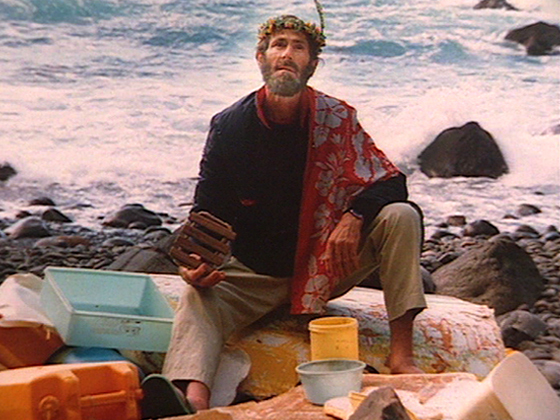
A full length television programme.
The credits for this television programme.
Back From the Dead - The Saga of the Rose-Noëlle
Television (full length) – 1996.
- Related videos
- Comments (7)
This documentary tells the story of four men men who survived 119 days adrift at sea in an upturned trimaran. John Glennie's boat Rose-Noëlle capsized in the Pacific in June 1989, and washed up four months later on Great Barrier Island. Director Mark Beesley mixes raw interviews and spare reenactments to convey the physical and emotional ordeal; the quartet were sometimes trapped inside a cramped section of the boat for days on end. The epic survival-at-sea tale won Best Documentary at the 1997 New Zealand Television Awards. The story was later retold in 2015 telemovie Abandoned .
Key Cast & Crew

Frank Whitten

Mark McNeill
Interviewer, Research
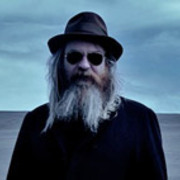
Mark Beesley
Director, Writer
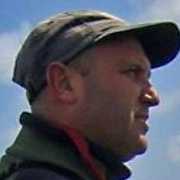
Mark Everton
Producer, Writer

John Harris

Russell Shipman
Produced by.
Greenstone TV
Acknowledgements
Made with funding from NZ On Air
- great barrier island
- heather hellriegel
- james nalepka
- jim nalepka
- john glennie
- karen hofman
Documentary
More Information
NZ Herald article on the Rose-Noëlle saga, September 2009
Article on various accounts of the Rose-Noëlle saga, Up Country website, May 2014
Rose-Noëlle author Jane Phare interviews survivor John Glennie, The NZ Herald, October 2009
Short clip from a TVNZ news report on efforts to find the Rose-Noëlle, Te Ara website
Interview with the cast of a TV movie about the Rose-Noëlle, Stuff, August 2015
If you liked this, you might also like...
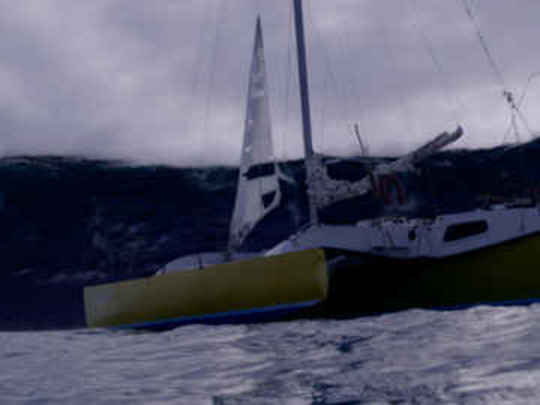
Telemovie based on the Rose-Noëlle story
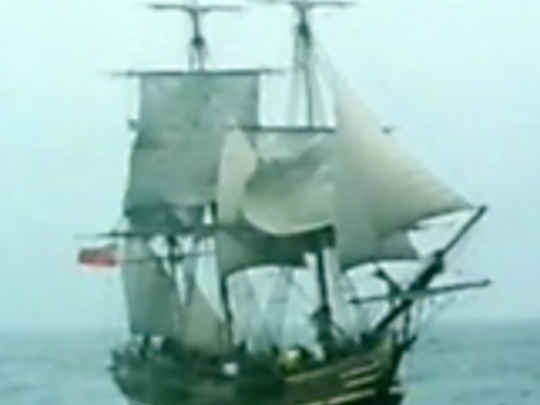
A Fated Ship
Features Captain Bligh’s remarkable survival at sea story
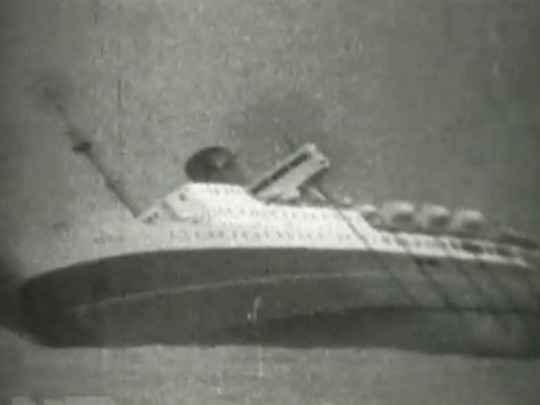
NZBC Classics - Wahine Disaster
The 1968 sinking of the Wahine ferry in Wellington Harbour
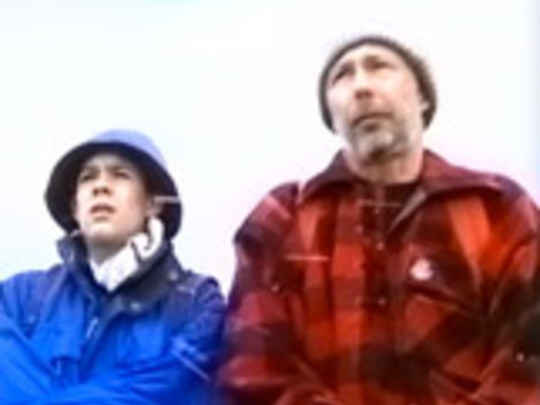
Do or Die - Lost in the Bush
Another Greenstone documentary featuring a survival story
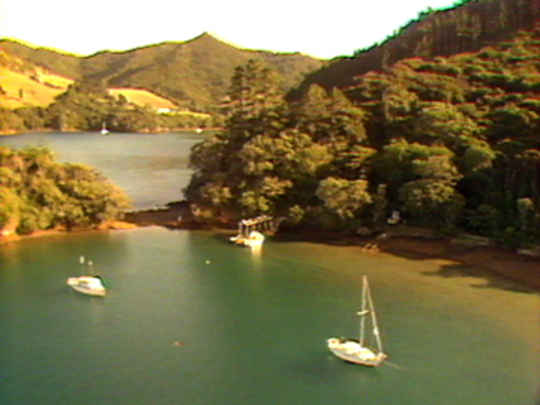
Weekend - Great Barrier Island
A less dramatic visit to Great Barrier Island
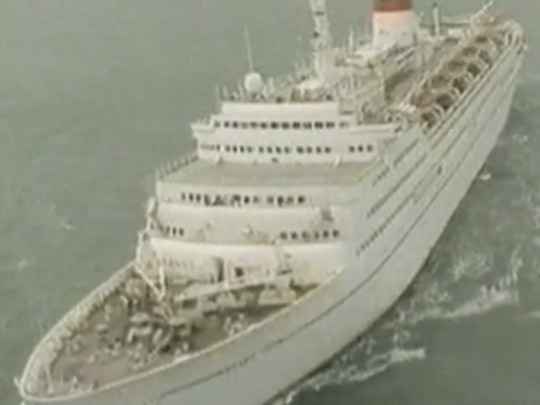
Destination Disaster: The Sinking of the Mikhail Lermontov
The sinking of a Russian cruise liner in the Marlborough...
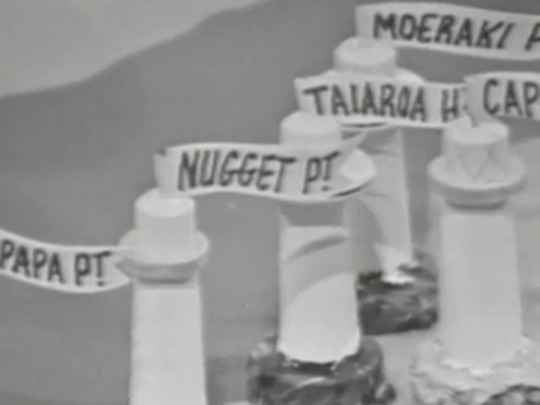
Spot On - First Episode
Episode on lighthouses
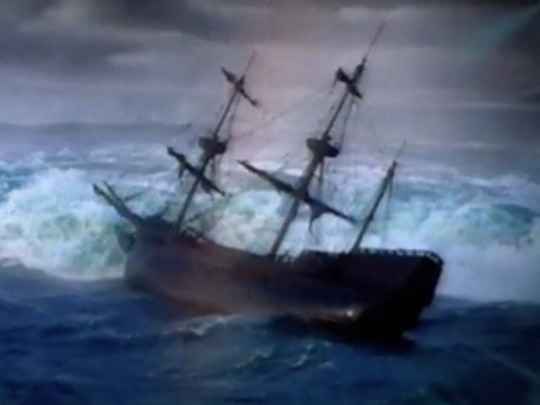
Shipwreck - The Tragedy of the Boyd
Greenstone series on famous NZ shipwrecks

A Gin Wigmore music video entitled S.O.S


Savage Honeymoon
Mark Beesley also directed this Westie feature film

Double Booking
Mark Beesley also directed this award-winning romantic tale
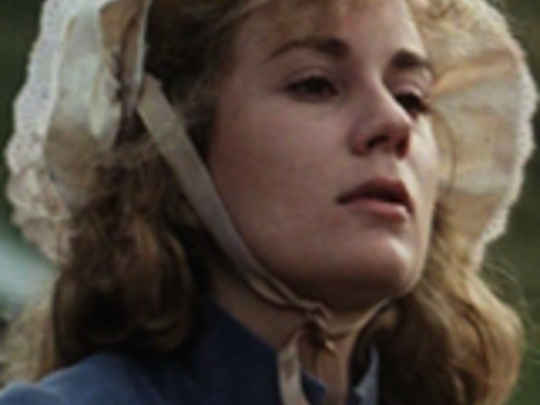
Heart of the High Country - First Episode
Narrator Frank Whitten plays the unsympathetic husband in...
Share this video
- Embed this video
- Badge this video
Which size would you like?
Copy this code and paste it into your website.
Which clip would you like to embed?
Start clip at:
Beginning This time: eg. 1m7s
At end of clip:
Continue to next clip Stop playing
Would you like the clip to be a fixed size or responsive?
<!-- Start NZ On Screen - Back From the Dead - The Saga of the Rose-Noëlle - Clip: Back From The Dead - The Saga of the Rose Noelle Size: 585 by 410 --> <iframe width=" 585 " height=" 410 " style="width: 585px " src=" https://www.nzonscreen.com/embed/ac562837fee6cbe8 " frameborder="0" allowfullscreen ></iframe> <!-- End NZ On Screen - Back From the Dead - The Saga of the Rose-Noëlle - Clip: Back From The Dead - The Saga of the Rose Noelle -->
<!-- Start NZ On Screen - Back From the Dead - The Saga of the Rose-Noëlle - Clip: Back From The Dead - The Saga of the Rose Noelle (credits) Size: 585 by 410 --> <iframe width=" 585 " height=" 410 " style="width: 585px " src=" https://www.nzonscreen.com/embed/407e8a9eedc26719 " frameborder="0" allowfullscreen ></iframe> <!-- End NZ On Screen - Back From the Dead - The Saga of the Rose-Noëlle - Clip: Back From The Dead - The Saga of the Rose Noelle (credits) -->
Don't have an account? Create an account here
- Subscribe Now
- Digital Editions
119 days lost at sea
Sailor John Glennie shares with YBW what it’s like to survive an extraordinary journey of shipwreck, storms and starvation

In a survival situation, knowledge, attitude and being prepared are paramount. If you are prepared, that pretty much takes care of the attitude – almost.
At 40.5 degrees latitude S, 179 degrees E longitude off New Zealand in the middle of winter we should have been heading for Chile through the Great Southern Ocean.
A massive storm on the east coast of New Zealand’s north island created a 60ft vertical wall of water that turned our boat upside down.
My 40ft trimaran Rose-Noelle capsized in a never-never land where no hope of survival existed. No ships, no planes and no fish. It’s a marine desert. Normally no one escapes capsizing down there. There virtually is no hope. On top of that, no one knew where my three-crew members and me were.
We spent the next four months drifting in what should have been famously strong winds and currents in the Great Southern Ocean – known as the Roaring Forties. They should have taken us across 5,000 miles of violent waters to Chile in South America but the wind, miraculously, turned around and brought us back to New Zealand.
To escape it all, I would go to that place in my mind or imagination where I was already out of it and snuggled up in my bed at home. I had learnt to do it during cold winter nights out training on my bike for road cycling. I would hit ‘the wall’ and still have 10 miles to get home.
I did it not because I had been taught it, but because it took me away to another place and the miles went by unnoticed.
I had been doing it the night before we capsized, only four days into our journey to Tonga, and did the same thing through the first 40 days adrift.
We had no fluid; apart from the four ounces of 7Up and Coca Cola we had a day – enough to fill a small spice jar.
It rained on the 40 th day just after I had made a water catchment system. Then another 40 days with as little as two teaspoons of cold uncooked rice a day for food.
With our boat having been upside down the entire time she started to turn into a floating reef and the mollusks that had grown attracted Kingfish, which we were able to gaff.
Towards the end of the third 40 days, we seemed to have become more in harmony with our environment for I wrote in my log: “Well, it’s 116 days today. Is that enough? Can I go home now?”
A few days later we were out of it.
In that whole four months adrift I never had one doubt I wouldn’t get out of it. The only thing I didn’t know was how. We survived 119 days on the upturned Rose-Noelle before finally being blown ashore on Great Barrier Island near Auckland.
My best advice to prepare for a situation such as mine is to lie down in your bed and turn your boat upside down. Where would you sleep? Will the water in the tanks leak out the air breathers?
Make sure you fasten the hatches inside your vessel, think about them upside down and tie everything on strings so they don’t wash away, even the dish rags.
And finally, stay with the boat.
You can buy John Glennie’s new book ‘ Playboys of the South Pacific ‘ here .
Related articles
- Gallery: Rose-Noelle’s tale of survival
- Capsize survivor urges continued search for missing yacht Nina
- New satellite images may have found missing schooner
4,000 years in the making
Unforgettable sea stories, the sights and sounds of history, welcome to beyond mainstream, take 4,000-year-old technology, add a group of 1950s radical sailors and genius engineers and you get a movement that defied sailing convention and redefined freedom. sailor, marine designer, adventurer and author jim brown has been on a 70-year high seas odyssey capturing the characters and culture of the modern multihull movement. the beyond mainstream project is cataloging and gathering jim’s vast library of photos, videos, articles and podcasts into an accessible form to share with all. and, coming soon, a documentary dedicated to this movement and the amazing cast of characters behind it..
Join Jim’s Friends And Help Share The Stories
This website will continue to catalog and organize Jim Brown’s and Scott Brown’s vast library of photos, videos, articles and podcasts, and also add new material as Jim remains a prolific storyteller! Additionally, work has begun on a documentary with a release date planned for late-2024. Experienced filmmakers Michael Frierson and Kevin Wells are turning hundreds of hours of interviews and archival footage into a 90-minute feature film documenting the development of multihulls and the amazing cast of characters behind the revolution!
You’re signed up!
Thank you for joining Friends of Jim Brown in our mission to organize, catalog, and share the amazing story of multihulls and one of the movement’s renowned pioneers.
I’ve known and admired Jim for a long time. This is why I and a couple of others in his circle have come together to pursue this project. If you are interested in supporting Beyond Mainstream or have questions, I’d be happy to talk. Send me an email and I’ll get right back to you.
And thanks again,
Andy Zimmerman
Email Andy at [email protected]
Get Jim's Books
"During a particular period in the 20th century a bunch of non-traditional engineers and tinkerers started thinking quite differently about the traditional craft of boatbuilding, and about the conventions of society. These guys jumped right out of the western tradition, grabbed some principles from a totally different genus (aircraft) and invented a hybrid vessel with hybrid vigor. I’ll never have the wherewithal to own a J-boat, a downeaster, or a Gloucester fishing schooner, but I can own a trimaran, because it was designed for people like me to build, own and sail. That’s a pretty amazing concept in this world of specialized manufacturing, oven-baked carbon fiber race boats and the growth of the indentured class."
"Part memoir, part adventure story, part travelogue, totally compelling.”
— From reviews of Jim’s memoir, Among the Multihulls
Friends of Jim would like to give special thanks to Scott Brown. Without his help and support, none of this would be possible.
© 2023 Friends of Jim Brown

John Glennie Trimaran ** NOW SOLD **

Used Yachts For Sale
Sailing tris over 31ft, john glennie boats for sale, john glennie trimaran boats for sale.
Mini Mysteries: Epic feast followed Rose-Noelle wreck
Share this article
Rose Noelle skipper John Glennie sits among wreckage of his trimaran with some of the items recovered along the rugged south-eastern coast of Great Barrier Island. Photo / Paul Charman.
Many odd things occur on Great Barrier Island, which is great when you're writing a series called "Mini Mysteries".
During five days on the island earlier this month, I scribbled down locals' accounts of prehistoric giants, ghost sightings, modern-day miracles and a murder most foul.
As the Sealink Car Ferry cast off from Wynyard Wharf on a calm and fine Sunday morning, I sat in my borrowed Mini Clubman 5-door and planned visits to sites where arcane, odd or even disturbing things are said to have occurred.
Of course, the "Major Mystery" of life on the Barrier is how its people do so well, despite challenging effects of isolation, indifference of mainland officialdom and destructiveness of natural disasters.
A few hours after landing at Tryphena I nosed the Mini into a driveway in Goosberry Flat, to discuss my first mystery.
Robyn Joynes made me a cuppa, then recounted a day 25 years ago, when she sited the upturned 6.5-tonne yacht Rose-Noelle.
It was to be a fairly unsanitised account of this famous survival story.
Robyn had gone to check on the house belonging to her ex-husband and good friend John Scimgeour, who was working off-island at the time.
Robyn noticed a strange-looking object out at sea, likely the first time anyone had sited the trimaran after it turned-turtle during a voyage to Tonga, 119 days previously.
After drifting an estimated 3000 km, the Rose-Noelle was cast up on to a reef off Little Waterfall Bay.
Inside the upturned vessel, skipper John Glennie and Jim Nalepka, Phillip Hofman and Rick Hellreigel, were just skin and bone.
For months they'd huddled together in an area the size of a queen-sized bed in the partially flooded upturned cabin, living off meagre stores, fishing and catching rainwater.
The adventure became one of the world's great maritime survival tales.
It has been the subject of at least two books, a stage play and a television documentary, while yet another movie project begins in filming March.
The dramatised production, to be called "Abandoned", will be centred at Orama Oasis, Karaka Bay, at the north end of Great Barrier, with additional filming at Tutukaka.
The two-hour feature for TV One, is to be produced by James Heyward, whose previous work includes Shackleton's Captain.
NZ on Air has contributed $2.6 million to the project, which is expected to be hugely challenging to shoot. NZ On Air communications manager Allanah Kalafatelis confirmed funding and the dates, but Mr Heyward didn't want to be interviewed.
The remarkable story qualifies as a mystery many times over, though of the original crew only Glennie and Nalepka are alive today to tell it.
Unusual winds and currents drove the boat back toward New Zealand rather than, as expected, toward the South American Coast.
When the Rose-Noelle eventually washed up, hitting "a narrow window" between high cliffs enabled the crew to avoid drowning or being smashed amid pounding surf and giant rocks.
Perhaps another mystery is how the crew survived the feast at the first house they broke into. Starved castaways can apparently die after stuffing weakened bodies with food.
Being far from the shops, it was Mr Scimgeour's habit to note down items in his cupboards, so food and drinks the men consumed can be quantified.
"At the time some people thought they made the story up about being 119 days at sea, but I never did," said Mr Scrimegour. "I could see they'd gone straight for carb-loading items and left fancy canned seafoods alone."
Alternately eating and vomiting, the castaways gobbled 3kg of sugar, two tins of condensed milk, a large jar of honey and about 30 cans, including beans, corn, tomatoes, asparagus, pineapple and stew. They ate a bag of rice, condiments, crackers, spreads, numerous cooking ingredients, packets of snack and breakfast foods, "and used 10 miles of toilet paper".
The binge feed was washed down with a bottle of whisky, a bottle of gin, other spirits, four bottles of claret and eight bottles of beer.
Mr Scimgeour learned of the visit when Robyn Joynes phoned, saying: "look at the four guys in the Herald this morning, wearing your clothes".
Sailing identity Penny Whiting (who later hosted Glennie) washed, ironed and returned the clothes, but none of the men bothered to contact the Barrier resident whose home they'd ransacked.
Robyn and John put in hours cleaning up the mess, including remains of pots blackened by burnt boil-ups.
Mr Scimgeour says he later made contact with Glennie, whose mental health he assessed as precarious in the months following his ordeal.
Tensions among the survivors have never been fully revealed in books or documentaries, he said.
Though photographed arm in arm following their ordeal, the four were never to reunite after leaving the island. (Hellreigel died two years after coming ashore and Hofman died in March, this year, 2014).
So what does the involuntary host of the Rose-Noelle survivors make of his experience 25 years on?
"I was happy for those desperate men to break into my holiday home for that was salvation and emotional release from the terrible trauma they had endured. I learned they were emotionally fragile and really very desperate being physically and emotionally shattered," he says.
"John Glennie later told me he believed that if they had not made it ashore that day he would have been killed by the other three. I had hoped that over time they would remember their journey and thank the many who provided succour and support.
"But it was disappointing to know from yachting friends that they all talked of the Barrier Island sojourn but never considered, or could be bothered, to say 'Thank-you' for property damage done, food consumed, or items borrowed.
"It was only by chance, that John Glennie and I later met and shared reminisces."
Paul Charman's Mini was supplied by BMW NZ and his trip to Great Barrier Island was courtesy of Sealink and Great Barrier Lodge.

Latest from New Zealand

Fa’anānā Efeso Collins: Traffic management around Onehunga funeral home
Scores of people are expected to pay their respects over the next few days.

'Torture' of exams a struggle for students who don't test well

Māori golfer Kyle Mahi tees up for a shot at New Zealand Open

Lotto luck for Waikato players

Cyberthreats set to evolve in 2024
Victor Shane's Drag Device Data Base
S/t-7 trimaran, “rose-noëlle”.
Trimaran, "Rose-Noëlle"
41' x 26' x 6.5 Tons
24-Ft. Dia. Parachute Sea Anchor
Force 8-10 Conditions
File S/T-7, obtained from John Glennie, New Zealand - Vessel name Rose-Noëlle , hailing port Nelson, New Zealand, trimaran designed and built by John Glennie, LOA 41' x Beam 26' x Draft 3' x 6.5 Tons - Sea anchor: 24-ft. Diameter military chest reserve parachute on 300' x 3/4" nylon three strand tether and bridle arms of 40' each, with 1/2" galvanized swivel - Full trip line - Deployed in a gale in deep water about 150 miles southeast of the East Cape of New Zealand with winds of 40-60 knots and seas of 20 ft. - Vessel's bow yawed 10° - Fouled trip line collapsed the parachute after 10 hours, allowing the trimaran to lie a-hull and be capsized by a rogue wave - Crew survived 118 days adrift inside the inverted hull.
On 4 June 1989 the trimaran Rose-Noëlle capsized some 140 miles east of the Wairapa coast of New Zealand. The crew of four spent 118 days adrift inside the upturned hull. The incident subsequently became a source of some controversy, leading to an investigation by the New Zealand Ministry of Transport. John Glennie's exclusive story was first published in the November 1989 issue of New Zealand Yachting . Later, John wrote a book about the ordeal called Spirit of Rose-Noëlle .
John Glennie is an institution in the land of Down Under. New Zealand and Australian magazines have referred to him as Free Spirit of the Pacific . John and his brother David started out by building a 35' Piver Lodestar trimaran in their Father's Marlborough farm shed in America. They named it Highlight and sailed away. After spending eight years roaming all over the Pacific, John and David wound up in Australia, where they worked on and delivered many famous boats, including Mike Kane's Spirit Of America , a Kraken 55 trimaran of Lock Crowther design.
Glennie's own boat, Rose-Noëlle , took nineteen years of intermittent work to build and launch. John sailed it to the Great Barrier Reef, then across the Tasman Sea to New Zealand, where he gained boat-building work at Paremata, working with the brother of New Zealand's America's Cup helmsman, David Barnes. Every cent that he earned went into equipping Rose-Noëlle for self-sufficiency on high seas. Innovative rigging, water still, solar panels, radios, radar, etc., and a 24-ft. diameter parachute sea anchor.
Rose-Noëlle set sail from Picton New Zealand on June 1st (winter Down Under), headed for warm waters and Tonga. The crew consisted of John Glennie, Philip Hoffman, Rich Hellriegel and Jim Napelka. On the third day out they ran into a southerly gale and for a while used a Sea Squid (bullet-shaped Australian plastic drogue) to slow the boat down. Later they stopped the boat and deployed the parachute sea anchor. It pulled the three bows of Rose-Noëlle into 20-ft. seas and kept them there for the next ten hours.
The full trip line, probably left hanging loose in the sea, must have fouled with the parachute because sometime after those ten hours the trimaran began to yaw increasingly from side to side, until finally she was lying a-hull. It was night and little could be done. An hour or so later, the crew heard the approach of a great roaring noise, much like that of a huge - Hawaiian - surf wave. The rogue wave hit the boat broadsides and rolled her over very quickly. In the article that appeared in New Zealand Yachting Glennie stated that just before the capsize the wind had eased and he was concerned that without the wind "regulating" the seas, two or three waves might "ring hands and turn into rogues."
After the capsize it took the crew a while to settle down to the business of survival. Wrote Glennie, "I had to keep their hopes up and get them over the shock of the first stage. If people give up, they die." Eventually they all adapted, surviving the next 118 days adrift inside the inverted hull of the trimaran. There was plenty of food left inside, and the problem of fresh water was solved when John devised a system for collecting and storing rain water. From then on it was patience and perseverance, despite numerous gales, saltwater sores, and the occasional brawl that one might expect in such dire and cramped circumstances.
The inverted trimaran drifted "all over the place." It is estimated that she covered, ignominiously, a journey of nearly 2,000 miles, during which the cramped crew experienced somewhere between 17-20 gales - an average of one every week! And astonishingly enough, four months after the Royal New Zealand Air Force planes had given up the search for Rose-Noëlle she washed back up unto Great Barrier Island, at the edge of the Hauraki Gulf, the well-populated sailing area of New Zealand. Transcript of hand-written notes that accompanied John Glennie's feedback:
The para-anchor worked well and I was most impressed till it fouled.... The trip line fouled the chute and with the chute partially collapsed we lay a-hull.... The wave was so big that it would have rolled the Cutty Sark! They [rogue waves] are out there. I think three waves got together, so it was probably 60 feet high. I saw a similar 60-ft. vertical wall of water in 1968, mid-winter, 43° south, below Tahiti. Water was running down its face and I remember the noise it made as it came towards us.... Next time I won't use a trip line. I could have got the chute back in with the electric capstan in the calm after the storm.
A reminder that the Casanovas used full trip lines for eighteen years with seldom a foul-up. According to John Casanova, the trick is to have a small swivel at the float, and keep the trip line fairly taut - no excess slack hanging loose in the sea to foul with the parachute or rode. Bear in mind, also, that if the wind force increases the main rode will elongate, requiring that the full trip line be slackened off accordingly (otherwise it may trip the canopy). By checking the trip line tension on a regular basis, one can tell if it is too loose, or too tight. One should also use the binoculars to keep an eye on the big red float itself. If it is behaving awkwardly - as though it had hooked onto a big fish - it may mean the trip line is too tight and needs to be slackened off a little.
2 thoughts on “S/T-7 Trimaran, “Rose-Noëlle””
Well done. I am sure if you get caught in a ‘Wall of water” Freak wave, it wouldn’t matter what you did. Check out the BBC ‘Freak Wave’. Notice that all the captains who saw one referred to it as a ‘wall of water’. Including the Captain of the Queen Mary who related it to the White Cliffs of Dover. The academics could not quite get their tongue around that word. LOL. I think the people on the ships that were hit did not mention the noise they make because they are insulated on the bridge. In a wave, it is only the wave that is moving. In a Freak wave wall of water, the whole thing is moving holis bolis, hence making that noise.. Just imagine the one that hit a ship in the Great Southern Ocean that came at them from the stb quarter and was coming at them over a half mile before it hit. The Sea anchor would do no good. Especially after watching “Freak Wave’. https://www.youtube.com/watch?v=Dt280noUFQ8 John
Agreed. When we set out to sea, we accept that we are taking on a risk that could be of the highest order. Just the same as when we cross a road. There is no such thing as absolute safety. All we can do is our very best to minimise the risk by adequate preparation and training. But if our time is up, there is nothing more that one can do.
Leave a Reply Cancel reply
Your email address will not be published. Required fields are marked *
Save my name, email, and website in this browser for the next time I comment.
Using Parachutes, Sea Anchors and Drogues to Cope with Heavy Weather – Over 130 Documented Case Histories
South Pacific Adventure Turns Into A Nightmare
First of three parts
``Here was my chance to do something exciting and adventurous.''
- Jim Nalepka
Last Sept. 30 four men were washed ashore on Great Barrier Island, long after most had given them up for dead. They had spent 119 days living in their upturned trimaran, the 40-foot Rose-Noelle. Yet the four - John Glennie, 49, the yacht's owner, and the crew, Rick Hellriegel, 32, Jim Nalepka, 39, and Phil Hoffman, 42 - were in such good physical condition that their story was, at first, greeted with skepticism. Hellriegel and Nalepka tell a story that is one of the great sagas of survival at sea.
JIM NALEPKA: There are 16,000 lakes where I live in Minnesota, but I'd never done any sailing. My friend Rick (Hellriegel) came over one morning. ``I'm going sailing to Tonga,'' he said, and he asked me if I wanted to go. I thought about it for four or five seconds. Then: ``Yes, I'll go. I'd love to go!''
At the Outward Bound school in New Zealand I was the catering director. I'd watch everybody else go on adventures and I'd say goodbye, see you in three days or a week, then I'd go back to planning a menu or cutting up potatoes. Here was my chance to do something exciting and adventurous, sailing in Tonga, warm weather and women in native skirts.
So I went to Picton and met John Glennie, the skipper. When I saw this boat - oh, it was like a Cadillac! It was a beautiful boat that was visually so impressive. The design was so classy and everything about it was meticulous. It had a TV set, satellite navigation, radar, wind generator, VHF and ham-radio sets, two stereos, everything imaginable in the kitchen: stainless-steel woks, even a barbecue. I thought, ``Boy, I'm going to be proud to be on this boat.''
RICK HELLRIEGEL: It was just getting into evening when we sailed out into Cook Strait. The wind was quite strong and we had to reduce sail. Even so we were doing 16 knots. It was the fastest we ever got. It's an amazing feeling hanging on to the helm of a sailing boat doing 16 knots. John and I were in the cockpit taking turns on the helm.
It was vigorous sailing, but the next day wasn't so bad. We could see the coast. The weather started to get bad that night. We threw out a drogue (a plastic drag) to try to slow us down. We weren't actually going that fast but with the size of the seas and the wind and rain and darkness it just felt too much for the crew. You couldn't see a thing. I couldn't even steer by the compass. I was steering by the feel of the wind, keeping it on the side of my face.
The conditions got so bad Phil (Hoffman) and I didn't really want to steer. I didn't feel confident on the helm. John steered for a couple of hours, then we decided to lie ahull, side on to the seas, just dropping the sails, lashing the wheel and leaving the boat to itself.
The sea was a heaving green mass streaked with white foam as the tops of the huge swells were blown off by the wind. The boat would ride most of the waves really well but the odd one would come through and break on us. There'd be a real crack and the boat would slew sideways, a feeling of shuddering across the water, doogga-doogga-doogga. It felt really unstable and we were being bashed hard.
In the morning I brought up the idea of putting out the sea anchor, a kind of parachute, to hold us bow on to the waves. Over the next 1 1/2 hours we struggled to get it set, but once we had it right the boat turned into the wind and the ride was quite comfortable.
We didn't slam sideways as we'd been doing. It held for four hours, then the motion of the boat changed and we turned side-on again. We looked outside and realized the sea anchor was only partly working. The only thing I knew about multi-hulls was that if you are side-on in those conditions, you don't want anything that will dig in and stop your sideways movement. You need to be able to skip over the water when the waves hit you. The sea anchor was not keeping us head-on any longer, but it was enough to hold us up when the waves hit us so that we wouldn't move sideways as freely. I wanted to get rid of it, but John said we'd had trouble putting it out, and there was a danger of getting our feet or fingers crushed. He thought we should leave it out and I agreed. With hindsight, we should have gotten rid of the thing.
JIM: Every so often a big wave would hit and catapult me off the bed and slam me into the floor. Rick and I were on a double bunk, so whoever was on the outside would get thrown out of bed.
Meanwhile, Phil was getting very nervous. He'd been married for years, had two nice kids I'd met before we left, and it was his first time out of New Zealand, so it was an adventure for him. He was just a nice, really pleasant person. But during the first three days he more than any of us was panicking. He kept saying, ``We're going to flip, we're going to flip over.''
He suffered from claustrophobia and he was wedged into this bunk that was like a coffin. He'd look out of the window and say, ``I can't take it anymore, I've got to get out of here.'' He wanted John to call a helicopter to come and pick him up. John said he didn't want to use the radio unless it was really an emergency because he wasn't licensed to use it. And John didn't think it was an ``emergency.''
RICK: We woke up at first light on June 4. The wind had dropped. I could just see through the portholes. The white streaks and the foam on the sea had gone. The waves weren't breaking anymore, but the seas were still enormous. John was up. We looked at each other and said, ``Today's the day we can go sailing again, we can get on our way.'' We decided to sail off after we'd had breakfast.
At that moment I felt that familiar sensation. The boat lurched, there was that split second before the wave hit that always puts fear into you. I can actually hear it. It sounded different from all the others. It was bigger and louder. It just went boom! In my mind the sea anchor stopped the boat from skidding sideways and it just went up and over without any hesitation at all, and I still don't know what size the wave was, what it looked like.
JIM: I went through a tornado as a kid. It took our whole block. Before the tornado hits it gets real quiet and eerie and then, wham! This wave reminded me of that. It gave almost no sign that it was coming, then wham, it just hit, hard and fast, and before we knew it we were upside-down and our worst fears had materialized in a second.
I didn't know what to do. Water started filling up the cabin. I asked Rick how much it would fill up and he said, ``I'm not sure.'' The water kept coming and coming. ``What are we going to do now?'' It reached our chests. Then it stopped. It was dark.
When we turned upside-down, Phil got trapped in that little coffin where he was sleeping and he was screaming. I think John pulled him out. I barely remember. Maybe with us all yelling, Phil found the direction and worked toward the noise, because when the boat went over he had to get out underneath the dinette. He was actually wedged in there with the water rising and he was a big guy with claustrophobia. According to John, he panicked so much he kicked out the doors of the companionway, which opened up the hull for everything to be sucked out. John held it against him for four months.
I looked around for John. He knew what to do. He told us to grab everything we could and throw it back into the aft cabin. We were grabbing apples and sleeping bags and anything we found floating we thought might be useful and throwing them into the cabin.
When I looked back everything was gone. All I salvaged of my gear was what I had on.
RICK: We worked hard for hours, filling in the bottom of the aft cabin, raising the level above the water. Drawers, sleeping bags, life jackets, an old mattress, cupboard doors, anything that would take up the space. The aft cabin was separated from the main cabin by an opening so small that when the boat was up the right way you had to get on your knees to get into it. John had a double berth in there. We were all working inside the boat. No one had been outside. That was really lucky. If that wave had come an hour later when maybe we were going to try and sail off, there might have been people outside.
We knew the boat was going to float. Everything I'd read suggested that trimarans filled up so far, then floated. John was quite certain it would float.
The night before when I was worried we might overturn I'd gone to the cupboard and grabbed the electronic position-indicating radio beacon (epirb) and put it in a waterproof bag. When the boat went over, the first thing I grabbed was that bag with the epirb in it.
I thought, ``What a bummer this is, but we're going to get out of here in a few days, we've got the epirb; it's the one thing we really need.'' We were cold, wet and miserable - but not afraid. As soon as we got that sleeping platform above the water we just cuddled together, lying all in the same direction, like spoons.
JIM: We're talking of a living area the size of a queen-size mattress, with four men on it. Even on that first night we argued over a space to sleep in, who was taking up the most space.
Those were the worst periods for me, when I was really scared. The waves were hitting the boat and I was worried that we might tip over again. We went through a lot more storms in those first weeks. If the boat came up the right way while we were all in the aft cabin we might never find the exit. We'd be trapped. All that gear coming down and the water pouring in. We'd all get disoriented. We'd all get stuck.
John kept saying, ``Never, we will never turn right-side up.'' But he always said we wouldn't flip over in the first place. It was one of our worst fears and I didn't believe him. Twelve hours a day it would be pitch black and I'd be in that corner position in another storm with waves smacking into us - what if we turned right-side up? All this stuff would be on top of us. How would I find the hole to get out?
I still looked to John because he was the only one who seemed to know what was going on, where things were, what to do. He had all these little compartments and lockers and so much gear on board that we were still taking things out two months later. He'd just dive into a locker and say, ``Look what I found,'' or ``God, where has that been?'' He never seemed to know exactly where everything was. He was kind of spaced out all the time.
That first week we all just sweated so much! Our perspiration gathered on the ceiling and would drip down as if we were in a cave. We were still drinking plenty of liquid - after that we started to ration the water.
RICK: We concentrated on getting the epirb to work. ``That's all we have to do,'' we thought, ``make sure the signal gets out and we'll be all right.''
Phil and John went up to the bow and cut a hole, just above the waterline, about a meter square. They used a chisel and hammer to break through the fiberglass and foam of the hull, then a keyhole saw.
We weren't sure the beacon would transmit inside a fiberglass core. We clamped it onto the inside of the hole, with the aerial pointing out. Then we flicked a little switch and an intermittent light came on straight away, as it was supposed to. It was transmitting. It was just a matter of living then, waiting for our rescuers to home in on the signal.
We decided that first hole was useless to us for getting in and out of the boat and we wanted to be able to sit on the keel to keep a lookout. We cut a second one, just outside our aft cabin. You had to be a bit of a gymnast to get through it and there were always sharp edges because it was fiberglass.
Then a few days after we got the beacon going we found a V-sheet, a bright orange international emergency distress signal with a black ``V'' painted on it. We tied it over the hull, open to the sky. We figured it was just tomorrow - tomorrow someone would see us. We had no idea we were going to have to last for months.
JIM: We all thought, ``This is all we need.'' This plus the epirb. A plane will spot us for sure. We kept reinforcing each other: ``As soon as they see the V-sheet we're back home again.'' Then, as the days went on, and the wind kept blowing, the thing slowly started to rip apart and soon there was nothing left of it. Then the epirb stopped transmitting, the batteries went flat, the light went out. Our biggest chance of being found was gone.
(Copyright, 1990, Jim Nalepka. Distributed by Tribune Media Services, Inc. All rights reserved.)
TOMORROW IN THE SEATTLE TIMES: Thrown together, the men bicker, weaken and lose faith.

- Music Playlists
- Orb Gallery
- Featured Products
- About Ramtha’s School
- $1 Million Event R-Vs
- Event Links
- The Blu Room
- Lecture Series
- Lotto Winners
- Featured Articles
- Earth Changes
- Mother Nature
- Preparedness
- Sovereignty
- Analogical Archery
- Neighborhood Walk
- Fireside Series
- Create Your Year
- Home Study Program
- Ramtha's Campaign
- Ramtha's Lifetime
- Sending-and-Receiving
- Featured RSE Products
- Remote-Views
- RSE Student Accomplishments
- RSE Teachers
- quantum physics
- The Observer
"Free" Ramtha Teaching Open to the Public!
As a member of the RSE E-List, you will receive live and online event annnouncements, recommended reading, products available online and in-store, and much more.
SIGN UP NOW!
First Time Student?
For information on our live and online courses click here.

For weekly deliveries to your email inbox, click here.
Reunion Guest Speaker Judy Mikovits
Ramtha intimate day "destiny's children", arriving at your future ramtha - june 6, 2014, 2017 create your year on-demand event, frequency - music & sound on-demand workshop.
- Extraordinary Student Accomplishment: RSE Students in Argentina Protected from Devastating Fires through Their Focus
- Dimensional Mind Spain – August 20 – 26, 2018 – Event Links
- Shiva’s Bow – August 21 – 25, 2018 – Event Links
- Dimensional Mind Italy – August 10 – 16, 2018 – Event Links
- Student Accomplishment: Saved from the Raging Fire through Focus on the Blue Grid®
- “HEALING WITH LIGHT – THE BLU ROOMS” Photo by RSE Student, Rory Sagner, in National Geographic
- Blue Mind Assay – July 8 – 14, 2018 – Event Links
- RSE Student Accomplishment: “Yelm’s Sara Foster receives award from CELP in Seattle”
- Romania Class 101 – June 18 – 23, 2018 – Event Links
- Dimensional Mind Australia – June 17 – 23, 2018 – Event Links
- News Headlines
- Predictions
- Ramtha Books
- Ramtha Events
- August 2018
- February 2018
- January 2018
- December 2017
- November 2017
- October 2017
- September 2017
- August 2017
- February 2017
- January 2017
- December 2016
- November 2016
- October 2016
- September 2016
- August 2016
- February 2016
- January 2016
- December 2015
- November 2015
- October 2015
- September 2015
- August 2015
- February 2015
- January 2015
- December 2014
- November 2014
- October 2014
- September 2014
- August 2014
- February 2014
- January 2014
- December 2013
- November 2013
- October 2013
- September 2013
- August 2013
- February 2013
- January 2013
- December 2012
- November 2012
- October 2012
- September 2012
- August 2012
- February 2012
- January 2012
- December 2011
- November 2011
- October 2011
- September 2011
- August 2011
- January 2011
- January 2010
Popular Tags
Student accomplishments: “the captain” john glennie publishes new book.
Known to many of us by Ramtha’s references to ‘The Captain’ or ”Master of the Sea’, John Glennie made international headlines when his story of survival was first published in 1990 titled ‘ The Spirit of Rose-Noelle: 119 Days Adrift, a Survival Story ,’ where as one of four of the survivors, Glennie describes the 1989 story of being adrift for four months in an overturned trimaran, The Rose Noelle .
Glennie attributed he and his crew being saved to Ramtha, as was written in the newspapers at the time. Read more from the New Zealand Herald. Read more from another newspaper report.
Glennie states, “In my book I mentioned about a ball of light that came down and exploded behind the clouds on the horizon. Newspapers picked that up and consequently every paper in NZ printed that I had seen a UFO.”
“Ram told me that it was him who sent the light ball. He said his ship was over me the whole time I was out there.”
Glennie’s story was made into a New Zealand television documentary in 1996. Click here for an excerpt.
Now, Glennie has taken all of his life’s experiences and written a new book ‘ Playboys of the South Pacific – South Seas Adventure on a shoe string .’
Glennie says: “This book is dedicated to the spirit of adventure that dwells in many young people, such as we were when we built our trimaran, Highlight. It was written for those who have big dreams with no apparent way to achieve them. These pages will show you how to realize that dream . . . and still have no money!!!
If we did it, so can you. It’s not about the money but the wisdom gained from the experience of living outside the box, which is what we are all after. It’s your job to create the dream and I hope this helps.
It is my wish that this is more of a manual on how to escape to that freedom and adventure — a reason to cruise the Pacific Islands and the world, to meet the people and lifestyles of foreign lands, laugh with them, learn their language and the attitude you need so that you don’t take an old recipe of dull predictable living and transpose it to your future dreams.
Through these pages you will learn to look upon adversity as an opportunity to be greater, for you will never know greatness without adversity. If this is not you, then at least experience it through this armchair adventure, do it in your mind, become immersed in the journey, as you read these pages, for the brain doesn’t really know the difference.
Make the move now instead of going through life wishing you had. With an ocean of dreams waiting, may the wind be always at your back. ” Read more
Download here
– Glennie was eulogized in two New Zealand newspaper stories: Read more from the New Zealand Herald. Read more from second newspaper eulogy.
– “New Zealand’s 10 most influential sailors” List complied by Boating New Zealand team and written by Rebecca Hayter. Click here
Glennie has been a student of Ramtha’s since 1991.
– UPDATE: July 5, 2013 John Glennie, Captain of The Rose Noelle was interviewed for a New Zealand newspaper about the missing American schooner Nina. Read more from NZ’s Dominion Post .
– UPDATE: March 9, 2015 “Rose Noelle TV production includes Tutukaka location shoot” “The 6.5-tonne trimaran Rose Noelle washed ashore at the southeastern tip of Great Barrier in September 1989 after turning turtle during a stormy voyage to Tonga. After drifting about 3000km, it washed on to a reef off Little Waterfall Bay. After four months in the upturned vessel, skipper John Glennie and crew members Jim Nalepka, Phillip Hofman and Rick Hellreigel were skin and bone. They had huddled together in part of a flooded cabin, an area about equal to a queen-size bed.
The men cut a hole in the hull, caught rainwater and lived off stores, plus fish which swam into the craft. Unusual winds and currents drove the boat back toward New Zealand rather than, as expected, toward the South American Coast.
Many people were sceptical about the story, but scientific examination of marine growth on the Rose Noelle’s hull confirmed it,” by Mike Dinsdale, The Northern [NZ} Advocate . Read more
– UPDATE: March 10, 2015 “The Rose Noelle Story Brought to Life for TV One” “The story of one of New Zealands most intriguing maritime survival stories will be brought to life in the enthralling telefeature Abandoned for TV ONE.The Rose Noelle Story Brought to Life for TV One.”
“Abandoned is based on the book, The Spirit of Rose Noelle, written by survivor John Glennie, the owner and skipper of the ill-fated Trimaran,” quoting Pacific.scoop.co.nz. Read more
Comments are closed.
Ramtha's School of Enlightenment www.rse-newsletter.com Copyright © 2017 JZ Knight. All Rights Reserved
Ramtha's School of Enlightenment, a division of JZK, Inc. JZK, Inc., 14507 Yelm Hwy. SE, Yelm, WA 98597 360-458-5201
Ramtha®, C&E®, Consciousness & Energy®, Fieldwork®, The Tank®, Blue Body®, Twilight®, Torsion Process®, Neighborhood Walk®, The Grid ®, Create Your Day®, Become a Remarkable Life®, Mind As Matter®, Analogical Archery SM , and Gladys ®
Are trademarks and service marks of JZ Knight and are used with permission.

Home » Michigan » How to Survive a Rogue Wave: John Glennie's Ocean Survival Expertise
How to Survive a Rogue Wave: John Glennie's Ocean Survival Expertise

Video edited from original interview footage recorded by Greg and Tamara Penniket.
The Spirit of Rose Noelle:
Playboys of The South Pacific:
Short glossary of terms & locations referenced in this interview:
The Roaring Forties – The Roaring Forties are strong westerly winds found in the Southern Hemisphere, generally between the latitudes of 40 and 50 degrees.[1] The strong west-to-east air currents are caused by the combination of air being displaced from the Equator towards the South Pole, the Earth’s rotation, and the scarcity of landmasses to serve as windbreaks.
Hove to – a way of slowing a sailboat’s forward progress, as well as fixing the helm and sail positions so that the boat does not actively have to be steered.
Shoal – In oceanography, geomorphology, and earth sciences, a shoal is a natural submerged ridge, bank, or bar that consists of, or is covered by, sand or other unconsolidated material, and rises from the bed of a body of water to near the surface.
Tonga, officially the Kingdom of Tonga, is a Polynesian sovereign state and archipelago comprising 169 islands, of which 36 are inhabited.
The Marquesas Islands are a group of volcanic islands in French Polynesia. The Marquesas Islands form one of the five administrative divisions (subdivisions administratives) of French Polynesia. The capital of the Marquesas Islands administrative subdivision is the settlement of Taiohae on the island of Nuku Hiva.
Mount Maunganui is a major residential, commercial and industrial suburb of Tauranga, located on a peninsula to the north-east of Tauranga’s city centre.
Rapa, sometimes called Rapa Iti (Little Rapa, to distinguish it from “Rapa Nui” (Big Rapa), a name for Easter Island), is the largest and only inhabited island of the Bass Islands in French Polynesia.
Great Barrier Island lies in the outer Hauraki Gulf, New Zealand, 100 kilometres (62 mi) north-east of central Auckland. With an area of 285 square kilometres (110 sq mi) it is the sixth-largest island of New Zealand. source
You may also like

Winzenread Muskegon 2019 Part 2
Lots 47 & 89 roaring brook, thompsonville, mi..., anchor marine boat rentals live cam, ice fishing 2020 – western pennsylvania..., bittersweet ski resort | ski pure michigan, 17371 rapids drive, hersey, mi – 20003607, about the author.

- CLASSIFIEDS
- NEWSLETTERS
- SUBMIT NEWS

Relative claims missing schooner crew 'could still be surviving'
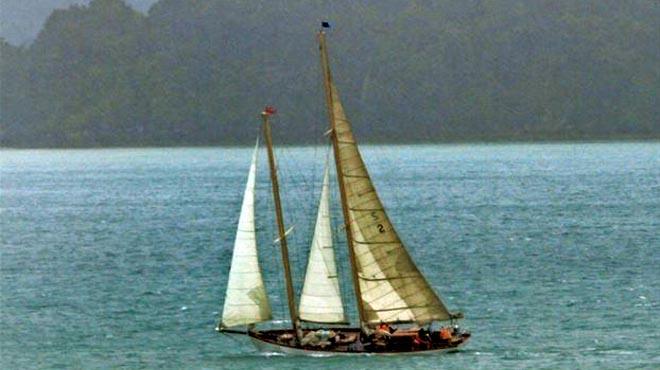
Related Articles
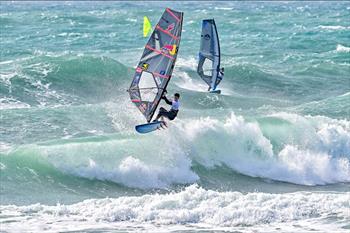

- My Searches
- Watch List (0)
- Sign In
JOHN GLENNIE TRIMARAN SOLD

Used Yachts For Sale
Sailing tris over 30ft, john glennie boats for sale, john glennie trimaran boats for sale.

IMAGES
VIDEO
COMMENTS
Rose-Noëlle was a trimaran that capsized at 6 AM on June 4, 1989, in the southern Pacific Ocean off the coast of New Zealand. Four men (John Glennie, James Nalepka, Rick Hellriegel and Phil Hoffman) survived adrift on the wreckage of the ship for 119 days.
The pair married when Karen was just 17 and they started a family together. By the 90s, they were living on a boat and sailing around New Zealand with their children. While docked behind the Rose Noelle in Picton, the opportunity arose for Phil, who was a builder, to join the boat's captain, John Glennie, on a voyage to Tonga.
Skipper John Glennie has signed contracts for his story but the payments are hardly likely to compensate for the $145,000 loss of his 40-foot trimaran, which was smashed to bits on rocks.
The story of the Rose-Noelle, Abandoned, is showing on Sunday Theatre. It was the story of the year: four men - John Glennie, Rick Hellriegel, Jim Nalepka and Phil Hofman - back from the dead ...
A sailing adventurer who endured and managed to stay alive on a capsized trimaran for 4 months along with 3 inexperienced crew, John shares valuable ocean sa...
119 DAYS—John Glennie, Phil Hoffman, Rick Hellriegel, Jim Nalepka. When their upturned trimaran Rose Noelle washed up on New Zealand's Great Barrier Island in October 1989, these four men were in good enough shape that they had a tough time convincing authorities that they had indeed been adrift for 119 days.
Suddenly, after three days of battling this ferocious storm off New Zealand's east coast, the worst fears held by Glennie and his three crew were about to be realised. The 41-foot-long trimaran Rose-Noëlle, which had been lying beam-on to the seas, was engulfed by an avalanche of white water, pitched to 90 degrees then flipped upside down.
This documentary tells the story of four men men who survived 119 days adrift at sea in an upturned trimaran. John Glennie's boat Rose-Noëlle capsized in the Pacific in June 1989, and washed up four months later on Great Barrier Island. Director Mark Beesley mixes raw interviews and spare reenactments to convey the physical and emotional ordeal; the quartet were sometimes trapped inside a ...
Sailor John Glennie shares with YBW what it's like to survive an extraordinary journey of shipwreck, storms and starvation. In a survival situation, knowledge, attitude and ... My 40ft trimaran Rose-Noelle capsized in a never-never land where no hope of survival existed. No ships, no planes and no fish. It's a marine desert.
In this sample audio segment, Jim Brown speaks to famous multihull sailor and adventurer John Glennie. John is possibly most notable for surviving with his shipmates for 119 days aboard their overturned trimaran named Rose-Noelle in 1989. This tale was recorded in a documentary entitled, Back From the Dead - The Saga of the Rose Noelle
John Glennie Trimaran. This listing is no longer available. You can however view similar listings using one of the four links below.
The Spirit of Rose-Noelle. Paperback - February 23, 1992. by John Glennie (Author) 4.6 11 ratings. See all formats and editions. One of four survivors describes his 119 days adrift in a capsized sailboat on the open seas, discussing how he and the other three men learned to catch fish, trap rainwater, and face the ravages of the sun.
John Glennie Trimaran. Janszia is a performance cruising trimaran designed for offshore cruising. Purchased 2 years ago with many additions made to...Find out more
Rose Noelle skipper John Glennie sits among wreckage of his trimaran with some of the items recovered along the rugged south-eastern coast of Great Barrier Island. Photo / Paul Charman.
Later, John wrote a book about the ordeal called Spirit of Rose-Noëlle. John Glennie is an institution in the land of Down Under. New Zealand and Australian magazines have referred to him as Free Spirit of the Pacific. John and his brother David started out by building a 35' Piver Lodestar trimaran in their Father's Marlborough farm shed in ...
He convinced a local businessman to fund the construction of a trimaran that would be a "certainty" to win the race, putting his house and business up as collateral. ... John Glennie, okayed the script and also wrote a book about the ordeal, called The Spirit of Rose Noelle. Australian actor Dominic Purcell stars as Glennie in this New ...
They had spent 119 days living in their upturned trimaran, the 40-foot Rose-Noelle. Yet the four - John Glennie, 49, the yacht's owner, and the crew, Rick Hellriegel, 32, Jim Nalepka, 39, and Phil Hoffman, 42 - were in such good physical condition that their story was, at first, greeted with skepticism.
John Glennie, Captain of The Rose Noelle was interviewed for a New Zealand newspaper about the missing American schooner Nina. Read more from NZ's Dominion Post. - UPDATE: March 9, 2015 "Rose Noelle TV production includes Tutukaka location shoot" "The 6.5-tonne trimaran Rose Noelle washed ashore at the southeastern tip of Great ...
A sailing adventurer who endured and managed to stay alive on a capsized trimaran for 4 months along with 3 inexperienced crew, John shares valuable ocean sailing expertise in this rare interview from 2010. Video edited from original interview footage recorded by Greg and Tamara Penniket. The Spirit of Rose Noelle: Playboys of The South …
John Glennie believes the fouled sea anchor was the main cause of the accident. But the wave was so big that he has doubts about whether the Rose-Noelle would have survived under ideal conditions. The trimaran remained afloat upside down, if anything, with its mast snapped at the first spreaders, more stable than right way up.
http://www.OutRigMedia.com - In this recording, Jim speaks to famous multihull sailor and adventurer John Glennie, who is possibly most notable for surviving...
A true story by John Glennie. This book contains the personal memoirs and adventures of the famed captain of Highlight and Rose-Noelle, before he was lost adrift in the Great Southern Ocean for 119 days. The story begins when he was an ingenious, young man with a dream to sail away from home to the exotic islands of the South Pacific in the 1960s.
JOHN GLENNIE TRIMARAN SOLD. This listing is no longer available, however you can view similar listings using any of the four links below. Used Yachts For Sale → Sailing Tris over 30ft John Glennie Boats For Sale → John Glennie Trimaran Boats For Sale. Boats for Sale Australia.